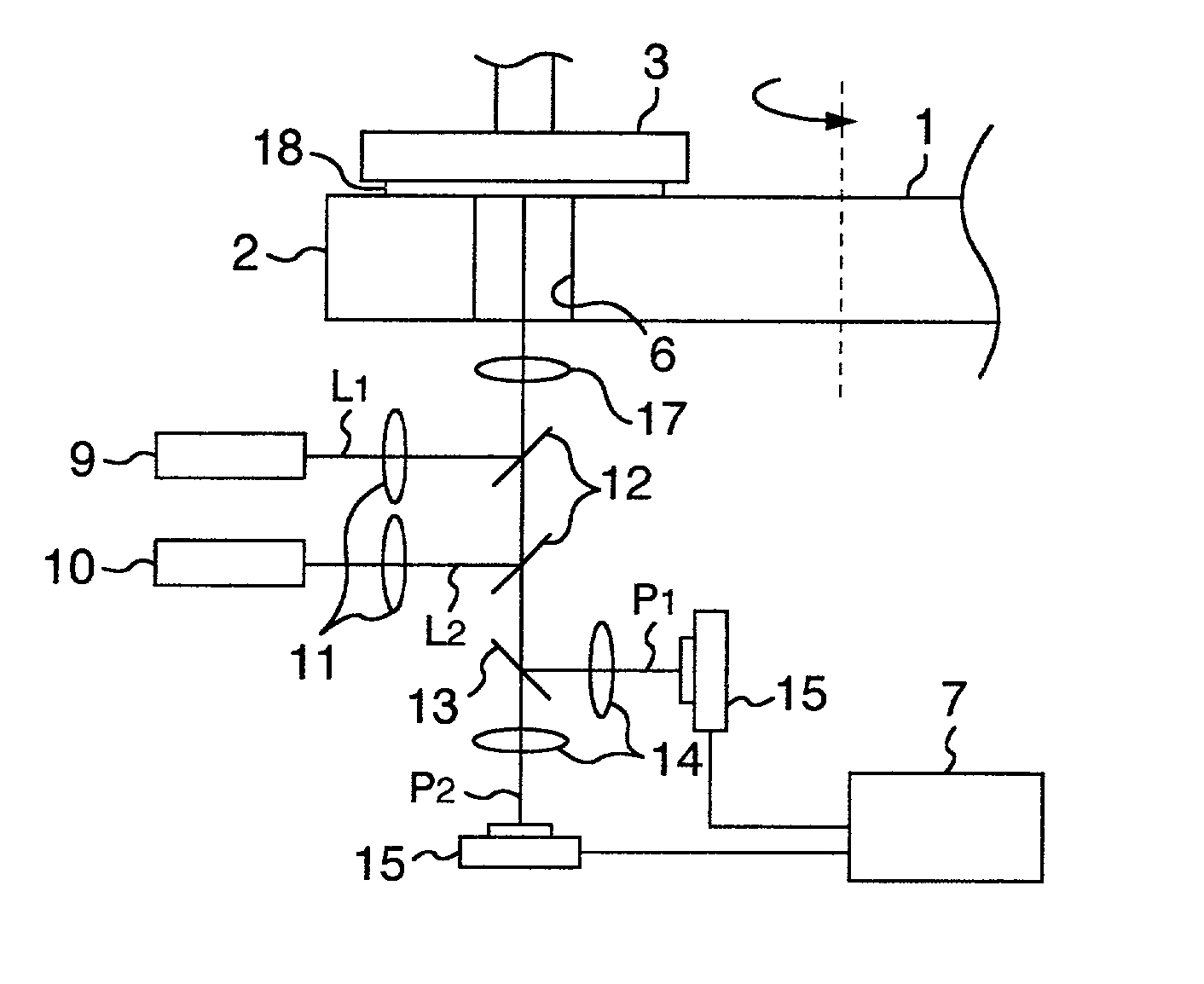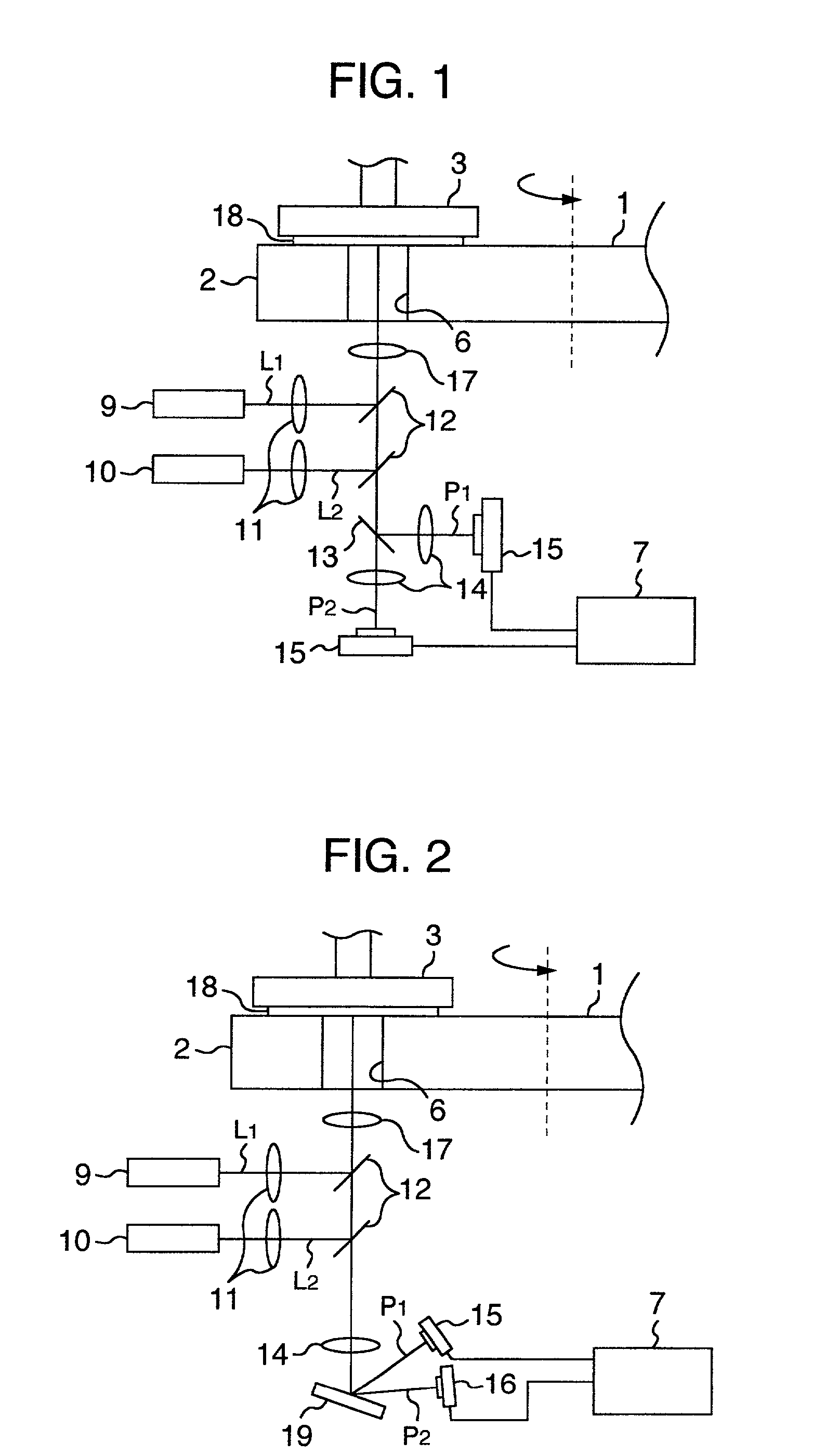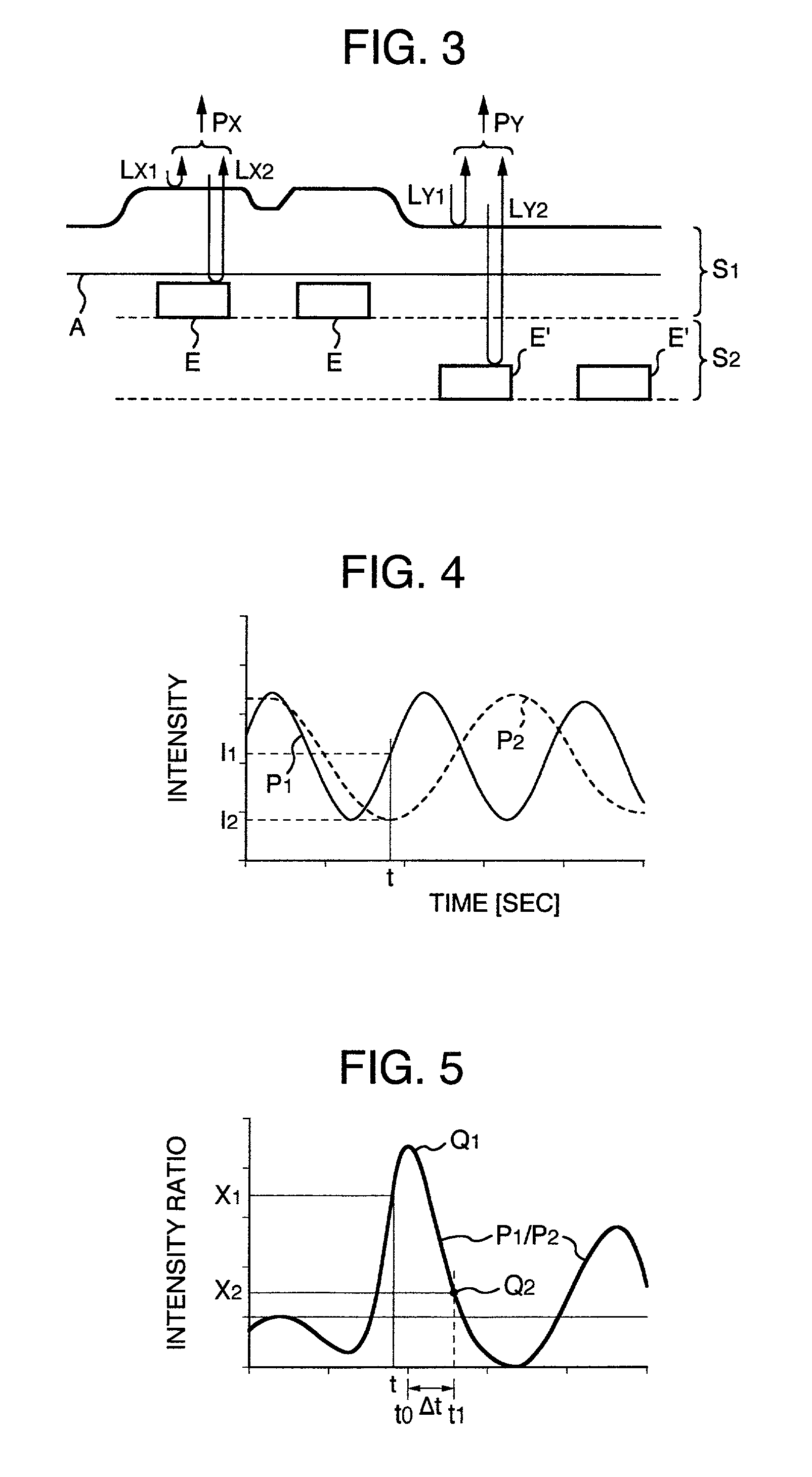Method of detecting and measuring endpoint of polishing processing and its apparatus and method of manufacturing semiconductor device using the same
a technology of polishing processing and endpoint detection, which is applied in the direction of lapping machines, instruments, abrasive surface conditioning devices, etc., can solve the problems of reducing the polishing performance of pad 1, the insulating film layer on the wafer surface has flaws, and the polishing performance of pad 1 is difficult to achieve uniform exposure conditions, etc., to achieve high-precision film thickness, increase the accuracy and improve the effect of detecting the endpoin
- Summary
- Abstract
- Description
- Claims
- Application Information
AI Technical Summary
Benefits of technology
Problems solved by technology
Method used
Image
Examples
first embodiment
[0045] Referring to FIG. 1, there is shown a constitutional diagram of a main portion of a method and an apparatus for detecting an endpoint of polishing processing according to the present invention, including laser light sources 9 and 10, a lens 11, a beam splitter 12, a dichroic mirror 13, a lens 14, optical detectors 15 and 16, an objective lens 17, and a wafer 18, where identical reference numerals are used for the portions corresponding to those in FIG. 20 to omit overlapped descriptions.
[0046] In this figure, the laser light sources 9 and 10 emits laser lights L.sub.1 and L.sub.2 having different wavelengths. These laser lights L.sub.1 and L.sub.2 are changed to beams by the lens 11, reflected on the beam splitter 12, and then emitted to the wafer 18 held by a wafer chuck via the objective lens 17 and the detection window 6 provided penetrating the polishing disk 2 and the pad 1 from the side of a layer insulating film (not shown). In this condition, the laser lights L.sub.1 ...
second embodiment
[0049] While the interference lights P.sub.1 and P.sub.1 caused by the laser lights L.sub.1 and L.sub.2 having different wavelengths are separated by using the dichroic mirror 13 in the embodiment shown in FIG. 1, they can be separated by using a diffraction grating 19 as shown in FIG. 2 as a Furthermore, it is also possible to use other wavelength separating means such as a prism other than the above.
[0050] Furthermore, as the optical detectors 15 and 16 in FIG. 1 and FIG. 2, it is possible to use a CCD two-dimensional sensor or one-dimensional line sensor or other optical sensors other than the CCD sensors.
[0051] If the single detection window 6 is provided on the polishing disk 2 and the wafer 18 is located on an extension line of the optical axis of the objective lens 17 in FIG. 1 and FIG. 2, the optical detectors 15 and 16 detect the interference lights P.sub.1 and P.sub.2 intermittently once per rotation of the polishing disk 2. These interference lights P.sub.1 and P.sub.2 a...
third embodiment
[0076] Referring to FIG. 7, there is shown a constitutional diagram of a main portion of a method and an apparatus for detecting an endpoint of polishing processing according to the present invention, including a white light source 20 and a spectrograph 21, with components corresponding to those in the above drawings designated by identical reference numerals to omit overlapped descriptions.
[0077] In this third embodiment, a white light source is used for a light source.
[0078] In FIG. 7, the white light source 20 emits a white light L. The white light L is changed to beams by a lens 11, reflected on a beam splitter 12, and then emitted to the wafer 18 via an objective lens 17 and a detection window 6 from the side of a layer insulating film (not shown). In this embodiment in the same manner as for the above embodiments, the white light L causes an interference for each wavelength component between a reflected light from a surface of the layer insulating film and a reflected light fr...
PUM
 Login to View More
Login to View More Abstract
Description
Claims
Application Information
 Login to View More
Login to View More - R&D
- Intellectual Property
- Life Sciences
- Materials
- Tech Scout
- Unparalleled Data Quality
- Higher Quality Content
- 60% Fewer Hallucinations
Browse by: Latest US Patents, China's latest patents, Technical Efficacy Thesaurus, Application Domain, Technology Topic, Popular Technical Reports.
© 2025 PatSnap. All rights reserved.Legal|Privacy policy|Modern Slavery Act Transparency Statement|Sitemap|About US| Contact US: help@patsnap.com



